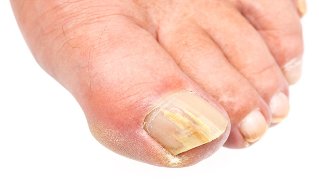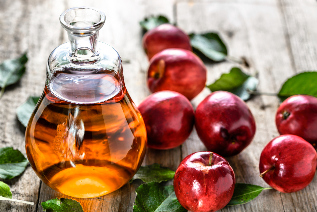Fungal infections (mycoses) are among the dermatological disorders are considered the most frequent. The contamination of pathogenic microorganisms, it is possible in several ways, and the low symptomatology of the disease at the early stage of its development is not all patients at the time obliges them to consult a doctor. As a result, the process of the disease covers the whole of most of the members (most often it is the foot) and extends deeply into the tissue. Launched of fungi on the feet is treatable, but to eliminate the infection, sometimes it takes several months of therapy-resistant.

The reasons of occurrence of the fungal infection of the feet
Fungal infections of the feet develops due to penetration into the sub-dermal layers of spores of pathogenic micro-organisms. The only defeat of the skin of the feet is called dermatomycoses, the destruction of the nail plate under the action of the fungus – onychomycosis.
The infection of pathogenic microorganism occurs in two ways – direct and indirect. In the first case, the mold spores can be found in the soil, on the floor, the wood surfaces. In the second, an infection that is transmitted by personal items – gloves, toiletries, slippers, towels, appliances manicure.
The micro-organisms keep for a very long time, their vitality in warm and moist places, which is why the infection occurs most often in swimming pools, on beaches, in the bathroom, the gym and the sauna.
The risk of penetration of the micro-organism in the skin repeatedly increases, if the feet are cracks, abrasion, wear, and calluses. The sensitivity to a fungus grows under the influence of the predisposing disease factors, that is:
- reduces the resistance of the organism, it is the lack of work of the immune system.
- non-compliance with hygiene standards;
- increased sweating;
- diseases of the endocrine system, are conducted with the violation of metabolic processes. Fungal infections are typical for patients with diabetes;
- the violation of blood circulation in the lower limbs, which may be associated with vascular pathologies or malformations of the judgment;
- wearing tight, poorly ventilated shoes. The foot, in such conditions, constantly sweat, arise, scratches and abrasion, it is created ideal for the reproduction of the fungus of environment;
- the age. The fungal infection is characteristic for children and the elderly, those categories of patients the skin is thin, and its protective properties reduced, and creates the prerequisites for the infiltration of the infection.
- an excessive dryness of the skin. Hydrated, the skin on the surface of the tissue a film, which prevents the penetration of pathogens. With the increase of the dryness of this protection is not, which allows disputes fungus easily penetrate to the inside.
The likelihood of developing a fungal infection is much higher if the organization affect multiple triggers of the disease factors.
Types of downy mildew
Of the disease depending on the species of fungus is classified as:
- athlete's foot. Called flexible Trichophytonmcntagrophytes;
- the.. Meeting in 70% of cases of mycosis of the feet.
Depending on the location of the pathological process emerged:
- the fungal infection between the toes (dermatophytosis). The more often takes the form of intertriginous (acute) of the fungal infection;
- for the yeast infection. The main signs – flaking of the skin, which, during the progression of the disease moves to the keratinization;
- disgidroticheskaya stop. The disease process begins with the formation of lesions similar by the form of allergic manifestations;
- deep form of yeast infection. The infection affects the water surface and the deeply located layers of skin off;
- onychomycosis – fungal for the defeat of the nail plate. Rarely flows isolated, in most cases, is a complication of the plantar surface of fungal infections.

The symptoms of the pathology
The first stage of the disease is most often is blurred signs. The emergence of the scaly patches, small red, itchy skin often is not taken seriously, and the use of a variety of open-air drug inflammation itching and reduces the symptoms, but the fungus does not die. Then there's an infection continues to develop and becomes chronic. The symptoms of the disease depend on the form of the disease and its duration.
- interdigital the form of the mycosis is characterized by the appearance of redness and burning sensation between the fingers. The inflammatory process not, the infection is rarely beyond of interdigital periods. Generally, in the winter, the symptoms disappear then, and during the summer period get worse;
- fungal defeat makes the peeling of the epidermis and the redness of the individual plots of the foot. Periodically a strong itch;
- hyperkeratotic form. Characterized by the formation water-saturated papules or plaques bluish-colored with a rough surface. Some centres can, between them, to pour, on the heels of the cracks;
- disgidroticheskaya form. The main signs – the emergence of a large number of vesicles, which, over time, rvlent and in their place remain the wounds. In the terminal phase, the disease is often confused with eczema.
- onychomycosis is manifested by the color change of the nail plate, the appearance on it, dark or bright, in stripes and spots, the whole of the nail and thickening.
At the onset of a burning sensation, redness, scaling, itching on the feet and legs, you must as soon as possible consult a doctor. At an early stage of the disease is easy to treat means.
The diagnosis
With a suspicion of fungal infection, you should consult a dermatologist. A physician experienced already on the basis of the complaints of the patient and of the review outlines the diagnosis. But to confirm, and to determine the type of the pathogen are necessary for analysis in the laboratory. Their implementation allows you to define the appearance of a micro-organism that is needed to choose the right treatment.
The methods of treatment
The drug therapy is selected according to the stage of the disease, the patient's age, comorbidities, and complications. The treatment should be complete, is the use of the outside and the other system of medicines, the popular methods.
Advanced, the doctor may prescribe you a multivitamin complex, they improve the functioning of the immune system. When the itching in the acute phase of the disease, relieve irritation help antihistamines. At the time of accession of a secondary infection requires a therapy of antibacterial drugs.
The fungus, you must remove and personal items. It is necessary to first treat shoes or disinfectants, but it is better to replace it with a new one.
During the detection of the infection, it should not be forgotten that it is possible infection by a fungus, and other members of the family. Therefore, until the healing need to use only single, personal hygiene items, towels and slippers. The spores of late blight destroyed under the effect of high temperatures, it is necessary, therefore, ironed underwear and bed linens, and even socks.
Local products
Local anti-fungal, it is ointments, gels, emulsions, and solutions. Are external medications on the skin stop after their treatment. To do this, just do it for the feet of the bath with potassium permanganate, baking soda or soap. During the procedure, 15 minutes of skin dried and are assigned to the tool.
When onychomycosis prior to the application of ointments or solution, you must remove the upper part of the nail affected. The nail plate is softened with the help of the keratolytic funds. If you do not, then the components of the ointment does not fall in the low layers of the nail, this is where mushrooms are grown of the colony.
When the defeat of the nail means of the fungus is sometimes necessary to drink for a period of 12 months and more. The schema of the intake of medications patient means a doctor.

Folk remedies
How to get rid of a fungal infection of the feet at home? It is necessary to remember that the use of all kinds of "Granny's recipes" as the main therapy helps to ensure that the infection is fading, but completely does not pass. The result is that the fungus that with time becomes active. Therefore, the folk and the cmax of the tool must be combined with a medical treatment.
To overcome the fungal infection stop using a bath, prepare ointments, rubbing.
- antifungal properties have baths with salt, soda and marseille soap. For 5 litres of hot water it is necessary to take 2 tablespoons of salt and soda, rub in a solution of a quarter of a piece of soap. In this water the feet undergo a half-hour, then dry and apply on the skin and nail antifungal;
- interdigital spaces and the sites of fungal infection on the feet can be greased with birch tar. Procedure is preferable to spend the night on the feet, wear socks;
- the apple cider vinegar it should be mixed with an equal quantity of an alcoholic solution of iodine. The resulting liquid moisten with the swab and well lubricate them affected area to stop;
- the garlic oil. The garlic cloves need to be grind into paste and mix with the creamy of the oil or fat swine. Received an ointment used for the treatment of the judgment.
The treatment of mycosis of the feet of the ways of several consecutive weeks. It is desirable to periodically change the means, this will improve the effectiveness of the therapy.
The prevention of the infection
Prevent infection is not always possible. But you can reduce the risk of infection fungal micro-organisms at a minimum. You must observe the following rules.
- In public places, where you want a pair of shoes, take her.
- Do not use other personal hygiene products.
- Formed on the feet from abrasion, calluses and scratches in a timely manner to treat.
- Wear only high-quality, well-ventilated shoes.
- Respect the rules of hygiene.
The likelihood of developing an infection decreases the proper functioning of the immunity. Improve the state of the defense contributes to the nutrition, vitamin, cure. Not necessarily need, and the time to cure all chronic diseases.
Conclusion
Nail fungus is not dangerous, but extremely unpleasant according to the manifestations and consequences of the pathology. Deal with the infection with the help of many modern pharmaceutical products, you can in a few days, but on one condition – timely appeal to a doctor.






























